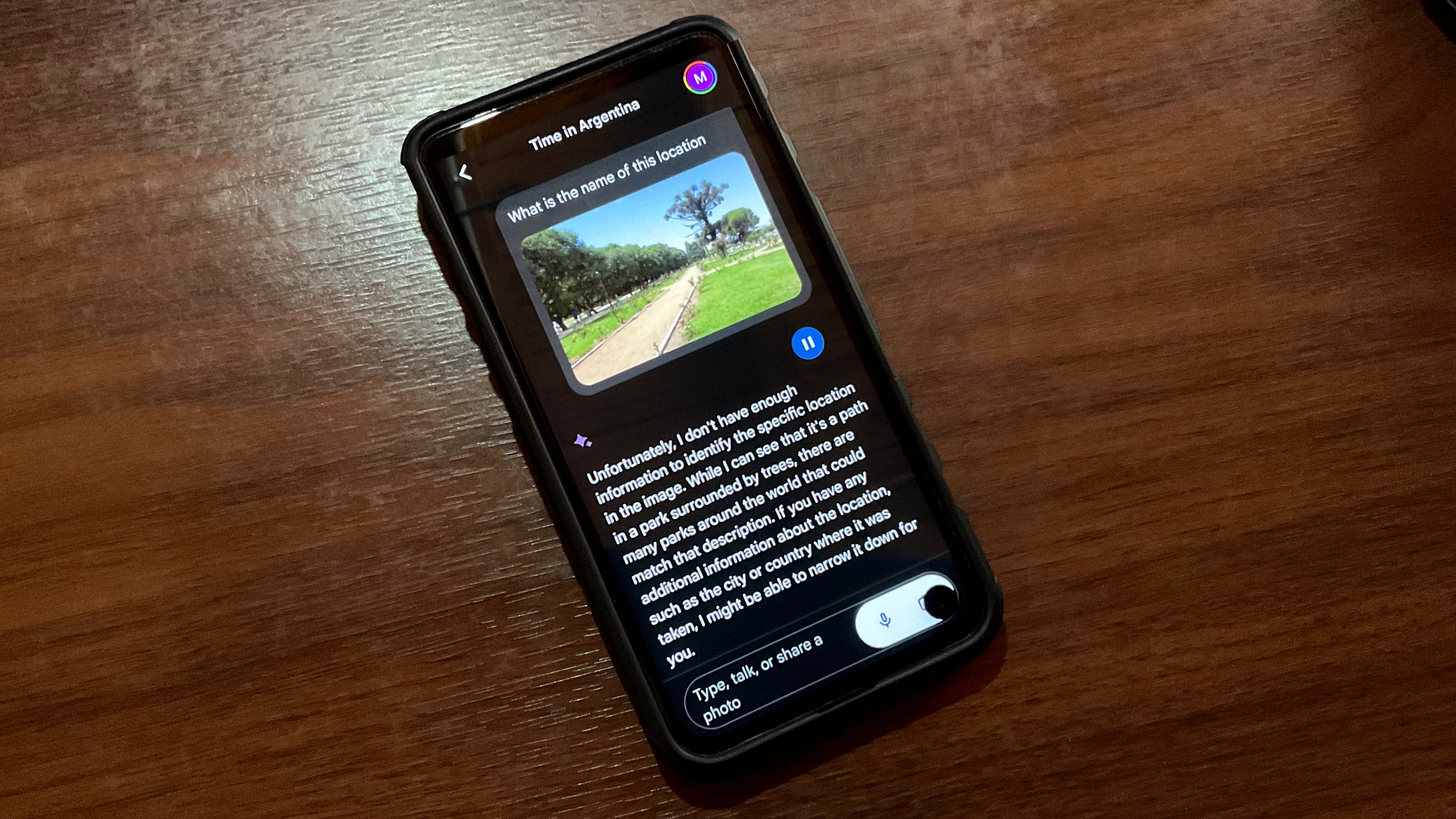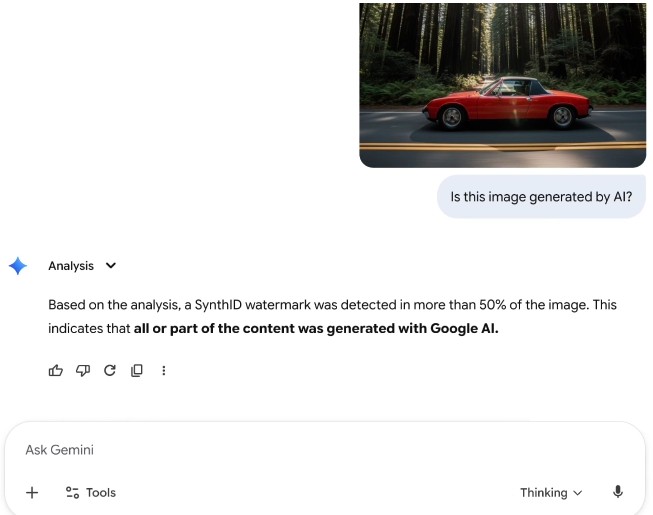Your Android phone is getting a new AI detector for photos

What you need to know
- Gemini now spots AI-made images and flags any photo that carries Google’s hidden SynthID watermark.
- However, Gemini can only confirm an image as AI-generated if it was made using Google’s own AI that utilizes SynthID.
- Google plans to expand this detection feature to audio, video, and Search results next.
Enjoy our content? Make sure to set Android Central as a preferred source in Google Search, and find out why you should so that you can stay up-to-date on the latest news, reviews, features, and more.
Google is trying to address one of the messiest parts of today’s internet, and it's rolling out a fresh Gemini update meant to figure out whether the suspiciously flawless image you’re looking at was actually generated by AI.
Now, the Gemini app can tell you if a photo was made or changed using Google’s AI tools. If you upload a picture with Google’s hidden SynthID watermark, Gemini will spot it and let you know it’s AI-generated, as per the company's announcement. It’s a faster version of the browser-based SynthID Detector Google launched earlier this year, which required manual uploads.
Google has been embedding invisible watermarks into images produced by its AI models, including the recently added Nano Banana Pro model used inside Gemini, Google Ads, and Vertex AI. These images also carry C2PA metadata, an industry-backed format that reveals how a piece of media was created or altered. With these two layers, Google wants to make AI content easier to trace as it moves across the web, especially when it gets reposted, remixed, or wrapped in misleading narratives.
Building SynthID directly into the Gemini app is Google’s attempt to bring this provenance data out of the developer world and into something regular people might actually when browsing the web.

A critical limitation
However, it’s important to remember that this system only works if everyone uses it. Right now, Gemini can’t spot AI images made by other companies’ tools.
So, while this update is useful, it isn’t a complete solution. It makes it easier to check images made with Google’s tools and encourages more transparency in the industry, but it doesn’t replace basic skepticism when you encounter a picture that looks a little too convenient. For this system to truly work, other platforms also need to use the same standards and make detection as easy as posting a photo online.
Google says it plans to expand detection to search results, audio, and video next, but the bigger leap will come when these tools work across the entire internet, not just inside a single company’s garden.
Get the latest news from Android Central, your trusted companion in the world of Android

Jay Bonggolto always keeps a nose for news. He has been writing about consumer tech and apps for as long as he can remember, and he has used a variety of Android phones since falling in love with Jelly Bean. Send him a direct message via X or LinkedIn.
You must confirm your public display name before commenting
Please logout and then login again, you will then be prompted to enter your display name.
